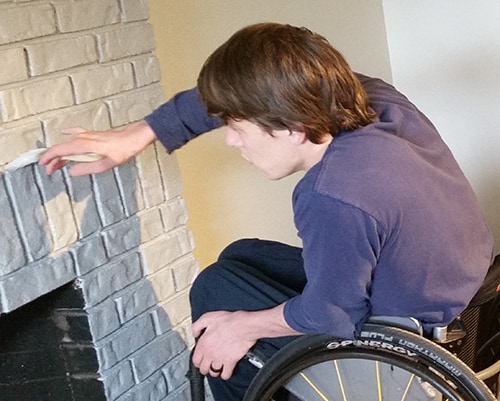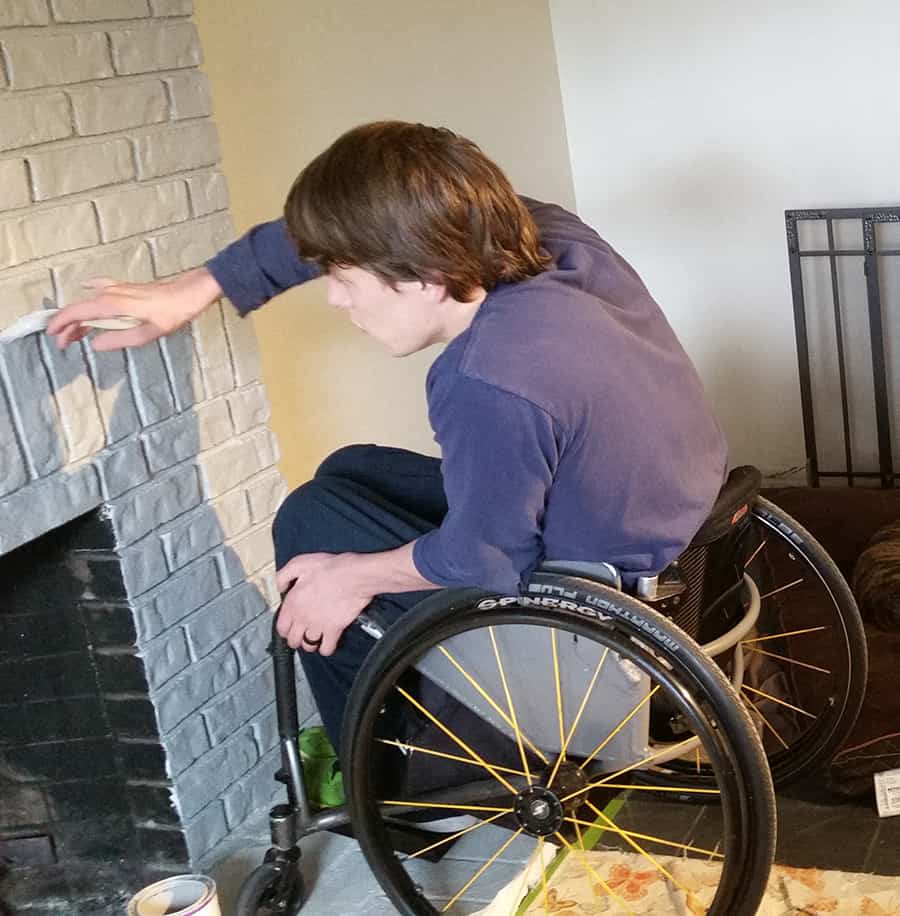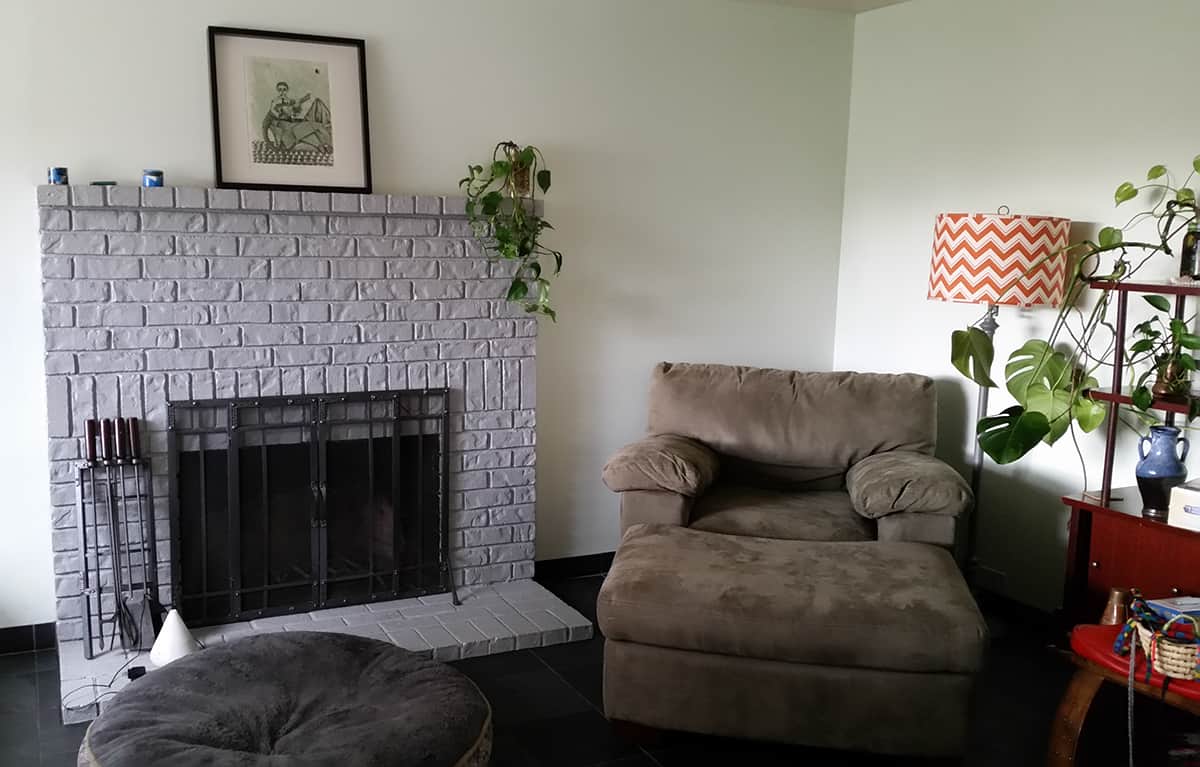
A fresh coat of paint can work miracles. There’s no easier way to transform your home, boost your happiness and, if you own the property, up your equity. As an added bonus, painting doesn’t require the specialized knowledge most other modifications demand and is manageable whatever your function. With the right tools and some hard work, your newly colorful abode will be the envy of your neighbors’ eyes. Here are some tips on tackling the basics.
You Take the High Road, I’ll Take the Low
Every painting project I’ve done has been with my wife, Kelly, and other family members. Over the years, we’ve developed a system that works well for us, one that should be familiar to any wheelers who’ve done projects with nondisabled partners. The gist of it is: I do whatever big areas I can reach, while Kelly gets the high stuff and any detail work. Not that the delineation of detail work had much to do with disability — Kelly was the kind of kid that colored between the lines, and I, most definitely, was not.

When updating our first home — a charmless ranch that looked like it hadn’t been touched since it was built in 1989 — Kelly started by pulling off trim and doors. At the same time, I was unscrewing light switch and outlet covers. Kelly would tape, but functionally there was no reason I couldn’t have taped the areas within my reach — it just would have taken me longer.
An ingenious system we cribbed from a professional crew I’d watched paint our condo building was to lay the tape down quickly, without worrying about the edges being perfect. You then go back over the tape with a razor, cutting right where you want your edge to be. It’s far easier to make a straight line and takes a fraction of the time, especially if you have weak hands or balance issues.
I would use a roller to paint the walls after Kelly finished the edging. As someone with limited hand strength, I found that it was more efficient for me to use a smaller roller because the lighter weight and smaller handle allowed for easier grip and less fumbling every time I had to reapply paint. Using a gripping aid, like Active Hands, is also worth considering.
Working from a chair, the low areas were more of a pain — in the neck and the back — than the high areas. I’m not sure why I never thought of it, but many wheelchair users just transfer to the floor, sitting on a cushion to save their butts, when tackling the low stuff. Eric Newby, a C7 quad recently updated a cabin that he and his wife bought in Bailey, Colorado. For him, sitting on a cushion on the floor with his legs crossed in front of him provides a stable base to do any work near the floor.

.
Zen and the Art of Painting
One unexpected bonus to living with limited function is the level of patience it forces on you. When updating a house, there are some things a nondisabled partner can do in a quarter of the time it would take me. There are others — painting the porous brick surface of the fireplace was my most memorable example — that took an extraordinary amount of time, no matter who was doing it. Strangely enough, I was usually better suited to these tedious, time-consuming projects. Nondisabled folks are used to being able to blaze through tasks; having to slow down can be maddening. For better or worse, I have plenty of practice with slow and pain in the ass. Sure, that fireplace took me four days to paint, but it looked damn good when I was done, and my spending the time there allowed Kelly to use her function in places it was more valuable.
Exterior Considerations
Often the most labor-intensive part of painting the exterior of a house isn’t the actual painting, it’s the prep. Any loose, chipping paint has to be removed before new paint goes on, or it won’t adhere properly. Without good prep, you could be right back where you started after only a few years. The most common tool for paint removal is the simple scraper. I experimented for a few hours with trying to find a technique that worked, but my grip limitations and lack of core function left me pretty well worthless.
On recommendation from a friend, I borrowed a Paint Eater ($69, available at many home improvement stores) — an electric-powered, handheld orbital sander with a sanding disk made specifically for removing paint. It has a strap on the side that allowed me to hold it with a single hand, though I did need to use both hands when I was actually sanding or it would buck around and bite into the wood. For those with grip issues and/or balance issues, I can’t recommend it enough.

Don’t be intimidated by the larger dimensions and increased obstacles presented by the outside of your home. Bob Vogel, a T10 para, says he was able to reach the entire exterior of his one-story house using roller extensions of various lengths. “In areas I needed to use a brush, I just duct taped the brush to the end of the extension,” he says. “On the one hand, it was a lot of hard work, but it was a tremendous amount of satisfaction, sitting back, looking at the house and saying, ‘Yeah, I did that.’”
If you can buy, rent or borrow one, paint sprayers are a wonder, and extension tubes are available to give you a few feet of extra reach. And if you already own one, Vogel recommends using a Freewheel to make getting around the outside of your house a little easier.
If you’ve refreshed your paint or undertaken any other DIY home improvement projects from your wheelchair, we’d like to hear about them. Comment online, or email smcbride@unitedspinal.org. We’ll post a blog to share reader tips and tricks. Happy hacking.
Support New MobilityWait! Before you wander off to other parts of the internet, please consider supporting New Mobility. For more than three decades, New Mobility has published groundbreaking content for active wheelchair users. We share practical advice from wheelchair users across the country, review life-changing technology and demand equity in healthcare, travel and all facets of life. But none of this is cheap, easy or profitable. Your support helps us give wheelchair users the resources to build a fulfilling life. |


Recent Comments
Kelly DeBardelaben on Tips to Maintain Bowel Regularity with SCI When You Travel
Glen Gregos on Traveling With and Without a Caregiver
Sue on Controller Recall Puts SmartDrive Safety in the Spotlight